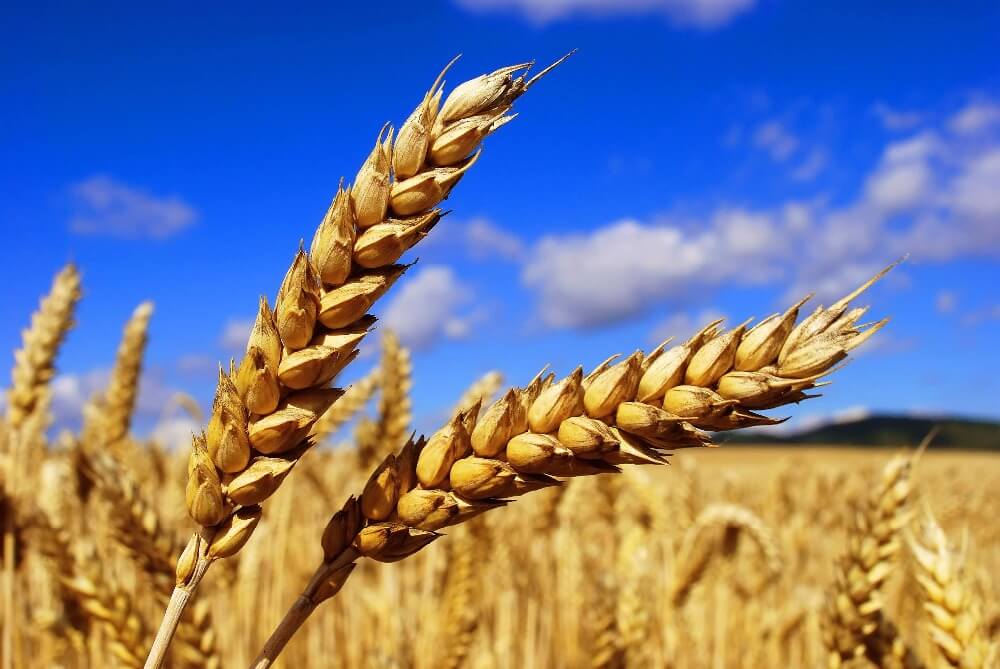Conspiracy theorists claim that some giant, secret organization is planning to kill off a third of the human race.
When they say it, most of us pretty easily write them off as a bunch of nut-jobs.
But it cannot be denied that, in the space of less than a century, the wheat industry took something that had been synonymous with “nourishment” throughout man’s entire existence and turned it into a commercial, rather than a nutritional, hero. Even more sinister is the fact that farmers have been incentivized to grow something that may be killing people.
The rise in gluten intolerance is NOT because people are eating more wheat. The average American today eats about 130 pounds of wheat a year. The average American at the beginning of the twentieth century ate 225 pounds a year.
The wheat plant has been messed with a lot in recent decades. In the words of Dr. Mark Hyman:
‘The Bible says, “Give us this day our daily bread.” Eating bread is nearly a religious commandment. But the Biblical wheat of our ancestors is something modern humans never eat. Instead, we eat the product of genetic manipulation and hybridization that created short, stubby, hardy, high yielding wheat plants with much higher amounts of starch and gluten and all sorts of new odd proteins. The man who engineered this modern wheat won the Nobel Prize – it promised to feed millions of starving around the world. Well, it has, and it has made them fat and sick.’
There are nearly a quarter million varieties of wheat worldwide. Yet all the wheat in your life comes from a very narrow band – fewer than a dozen – genetic varieties. Is it any wonder people have gluten problems and wheat allergies? Millions of acres of ‘amber waves of grain,’ and all of it nearly identical.
As discussed in part one of this series, one out of three people has a genetic predisposition to develop a gluten problem. But it turns out there’s gluten, and then there’s gluten.
Chemically, gluten is called HL-DQ. In the process of hybridizing and genetically modifying wheat to be hardier, more pest resistant, more prolific – and hence more profitable – scientists unwittingly created a Frankenstein’s monster wheat gene with a specific type of gluten sporting the sexy name HL-DQ2.5. Older, heirloom varieties of wheat, Spelt, Kamut, Einkorn and other wheat relatives, have a predominant gluten called HL-DQ2.2.
Most of the people who are raised on 2.2 have no gluten problem, even if they have the genetic predisposition for gluten intolerance. They can even eat 2.5 occasionally. But give people with the gluten intolerance gene enough 2.5 gluten and they develop gluten intolerance. Once they develop the problem they become sensitive to any form of gluten.
This is why, if you have gluten issues, or for that matter any odd health problems, it’s recommended that you completely eliminate gluten for a month or so.
If you’re going to try this, don’t forget that gluten is not just in bread, cookies and pasta. Gluten is a common additive in processed foods like soup mixes, sauces, candy, salad dressing, lunchmeat and meatballs, and most foods labeled low-fat or no-fat. It is often listed as Modified food starch, Malt, Hydrolyzed vegetable protein (HVP), or Texturized vegetable protein (TVP).
After a completely gluten-free month you can try reintroducing different kinds and amounts of gluten and see how your body reacts.
There are also some companies selling “gluten-digestive enzymes” for gluten intolerant people, but so far, there have been no studies proving that they work.
You can’t blame people for eating wheat. When combined with certain amino acids, whole wheat is a vital and economical source of protein, minerals and vitamins, not to mention that it supplies 20 percent of the total food calories for the world’s population.
Is there a way to provide mankind’s ‘daily bread’ without making everyone sick? Yes there is, but perhaps not the one you’re thinking of. That will be the subject of the next part of this series.
Please leave a comment.
Bill K. Underwood is a columnist and author of several books. You can help support this site by purchasing a book at this link to Amazon.com.


Thanks for explaining where the source of this massive gluten intolerance originated. We all see it, ‘but how did it happen ?’ has always puzzled me.
ReplyDelete